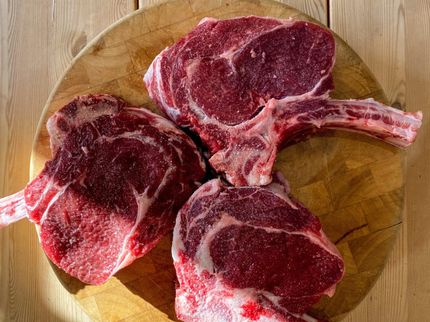Making soybeans smarter
Plant geneticist is finding ways to breed soybean crops that can handle heat, drought and water-logging stresses, improving yields under pressure
Ron Mittler is on a quest to create a smarter soybean. For years, mid-Missouri has withstood unpredictable weather patterns, including drought, heat waves and flooding — conditions that are known to hamper agricultural yields and make it difficult for farmers to produce. While we can’t control the weather, Mittler and his team are working to harness soybean crops’ natural ability to adapt to unfavorable weather conditions while also increasing their yields.

Ron Mittler
Roger Meissen/University of Missouri
Working with $2.4 million from the National Science Foundation, Mittler hopes to add to his more than two decades of research by investigating the mechanisms behind how plants cool themselves while under heat and drought stress. He’ll achieve this by genetically engineering soybean plants in ways that improve their resistance to these stresses.
This research brings Mittler one step closer to helping Missouri farmers adapt to harmful weather patterns while continuing to meet demand.
“What excites me is learning how plants solve problems and adapt to changes in their environment,” said Mittler, a professor of plant sciences in the University of Missouri’s College of Agriculture, Food and Natural Sciences. “Based on what we’ve learned from plants’ adaptation strategies, my team is able to take these new fundings and continue to innovate and improve upon what we already know.”
How do soybeans still produce yields when they’re hot and thirsty?
Having tracked weather patterns in Missouri for two decades, Mittler knows heat waves that frequently traverse the state are responsible for significant yield destructions. He sees exploring genetic variability — the differences in genes among populations — as a helpful way to figure out what soybean genes create plants most likely to withstand a combination of stress conditions.
Thanks to generations in tough environments, soybeans have evolved to manipulate cells — called guard cells — that control the opening and closing of stomatal pores on the surface of their leaves, sepals and flowers to become even more resilient to harsh weather conditions.
When there is a drought, the plant closes its stomata to retain water. However, when there is heat stress on top of the drought, the plant can’t breathe. Interestingly, some species of soybean plants have learned to cool themselves by only opening the stomata on their reproductive surfaces (the flowers and sepals) while closing the stomata on their leaves to retain water.
This balance allows the plant to cool itself and retain the water it needs to hydrate, ultimately keeping it alive long enough to produce its seasonal yield.
The answers are in teamwork
As a Bond Life Science Center principal investigator, Mittler said being a part of the Interdisciplinary Plant Group (IPG) is key to the success of his research. The IPG is an internationally recognized collective of professionals who research solutions to challenging questions in plant biology and beyond.
“Being a part of the IPG and working at Bond Life Science Center has been transformative for my research,” Mittler said. “IPG is home to incredible collaborators, world-class facilities and resources. These things enhance collaborations and inspire international conferences that spur growth and partnerships that move our research forward and support our students as they progress in their careers. I’m very happy to be here.”
Most read news
Other news from the department science

Get the food & beverage industry in your inbox
By submitting this form you agree that LUMITOS AG will send you the newsletter(s) selected above by email. Your data will not be passed on to third parties. Your data will be stored and processed in accordance with our data protection regulations. LUMITOS may contact you by email for the purpose of advertising or market and opinion surveys. You can revoke your consent at any time without giving reasons to LUMITOS AG, Ernst-Augustin-Str. 2, 12489 Berlin, Germany or by e-mail at revoke@lumitos.com with effect for the future. In addition, each email contains a link to unsubscribe from the corresponding newsletter.



























































